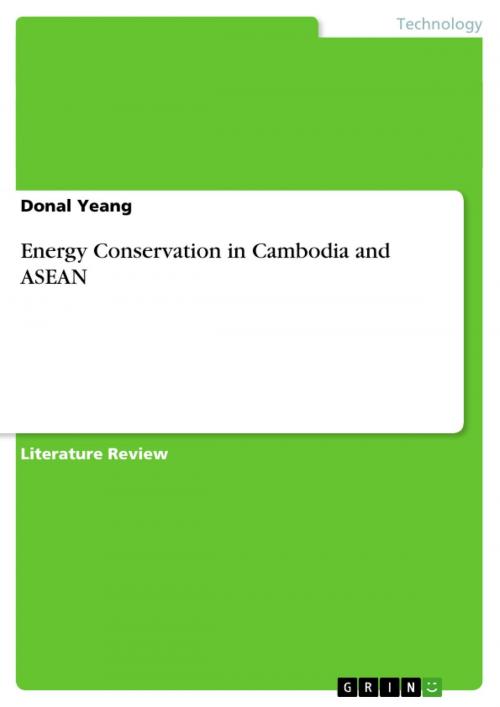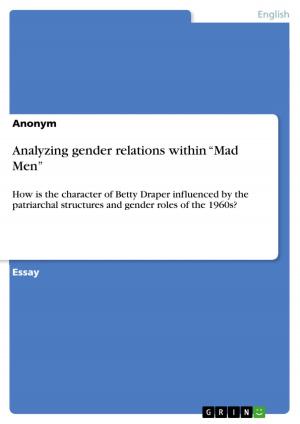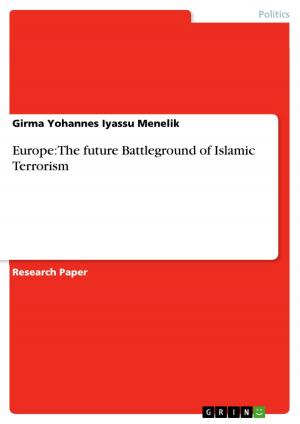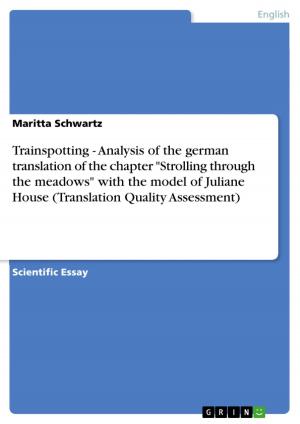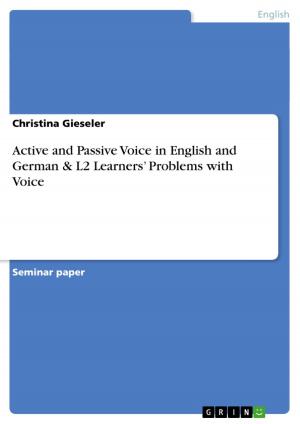| Author: | Donal Yeang | ISBN: | 9783640901234 |
| Publisher: | GRIN Publishing | Publication: | April 28, 2011 |
| Imprint: | GRIN Publishing | Language: | English |
| Author: | Donal Yeang |
| ISBN: | 9783640901234 |
| Publisher: | GRIN Publishing |
| Publication: | April 28, 2011 |
| Imprint: | GRIN Publishing |
| Language: | English |
Literature Review from the year 2011 in the subject Energy Sciences, , language: English, abstract: Cambodia's power supply facilities were heavily damaged by war and its rehabilitation were made under the support from the World Bank, ADB, Japan, USA and European Countries. At present, the electricity supply in Cambodia is fragmented into 24 isolated power systems centred in provincial towns and cities. All are fully reliant on diesel power stations. Per capita consumption is only about 48 kWh /year and less than 15% of households have access to electricity (urban 53.6%, rural 8.6%) and the amount of electricity consumption is as follows: Private sector 0.5%, Service sector 40%, Industrial sector 14%. The supply requirements are projected to increase in average by 12.1% per year, and the peak load is expected to reach up to 1 000 MW in 2020. An effective energy policy is considered by the government to be critical to Cambodia's future economic and industrial development and to improving the standard of living of its citizens. At present, only between 5% and 10% of Cambodia's population has access to networked power and the government is strongly committed to significantly increasing the percentage of its citizens to have access to the electricity distribution network. Around 76% of the 10,452 villages of Cambodia will still be without electricity in the year 2010. The government has set a target of 70% of households to access to electricity by 2030. However, Cambodia does also need a structured and comprehensive energy strategy that can address energy conservation needs.
Literature Review from the year 2011 in the subject Energy Sciences, , language: English, abstract: Cambodia's power supply facilities were heavily damaged by war and its rehabilitation were made under the support from the World Bank, ADB, Japan, USA and European Countries. At present, the electricity supply in Cambodia is fragmented into 24 isolated power systems centred in provincial towns and cities. All are fully reliant on diesel power stations. Per capita consumption is only about 48 kWh /year and less than 15% of households have access to electricity (urban 53.6%, rural 8.6%) and the amount of electricity consumption is as follows: Private sector 0.5%, Service sector 40%, Industrial sector 14%. The supply requirements are projected to increase in average by 12.1% per year, and the peak load is expected to reach up to 1 000 MW in 2020. An effective energy policy is considered by the government to be critical to Cambodia's future economic and industrial development and to improving the standard of living of its citizens. At present, only between 5% and 10% of Cambodia's population has access to networked power and the government is strongly committed to significantly increasing the percentage of its citizens to have access to the electricity distribution network. Around 76% of the 10,452 villages of Cambodia will still be without electricity in the year 2010. The government has set a target of 70% of households to access to electricity by 2030. However, Cambodia does also need a structured and comprehensive energy strategy that can address energy conservation needs.
